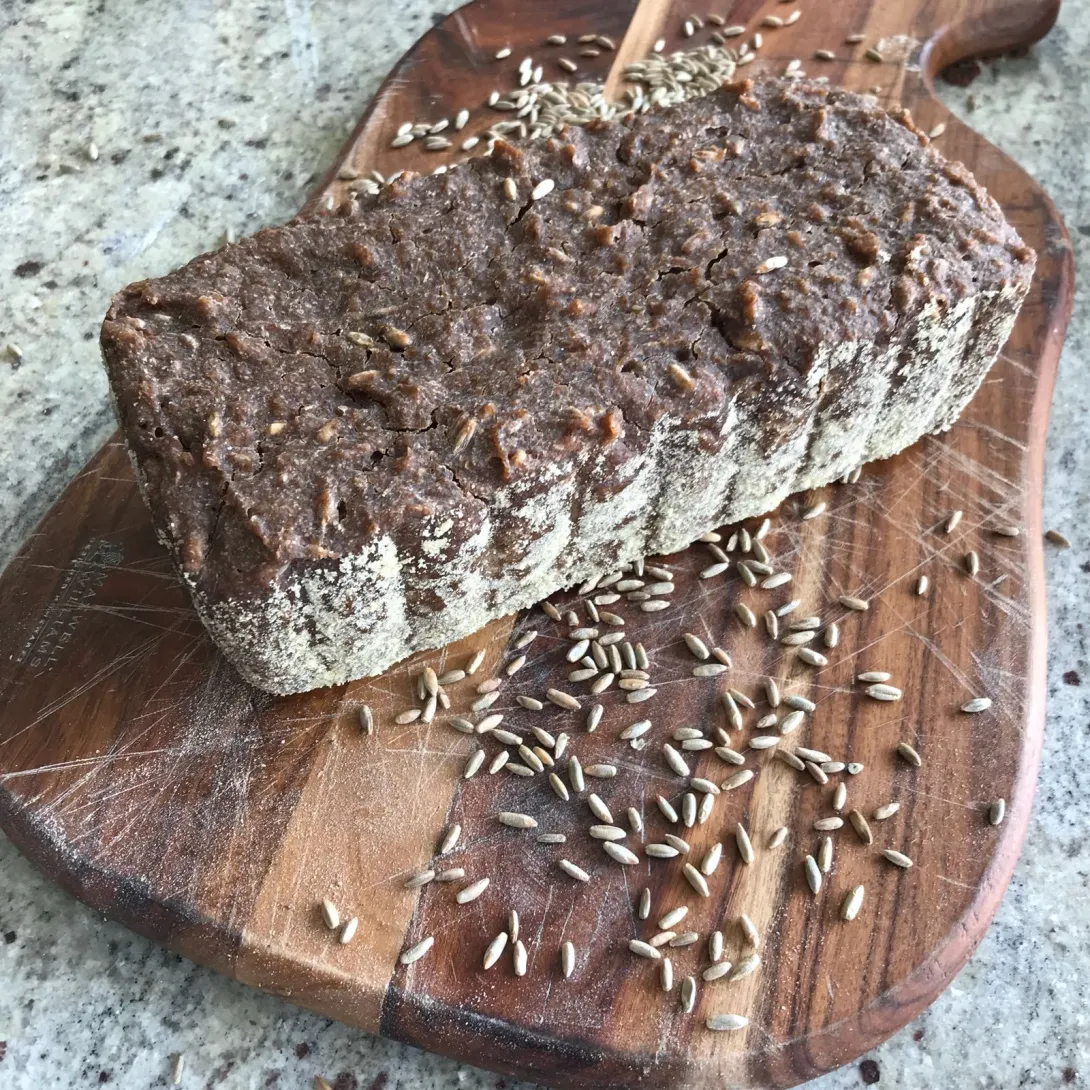
I've been curious about the "low and slow" technique of Icelandic rye ever since reading a comment somewhere about it and how sweet that bread turns out. However, I can't remember where I found it but the drive to make Icelandic rye has been floating around in my head ever since. I've done some googling but haven't been able to find a recipe that doesn't use ingredients like honey, molasses, syrups, etc. I want a very simple recipe that focuses on the flavour of the rye.
Anyway, when I realized that my oven can go as low as 170, I decided to wing it: I scalded 600g of whole rye flour with a much higher hydration than I meant to (I think I was somewhere close to 85% hydration), then 4 hours later added a small mason jar of old starter (probably about 250 grams), a handful of sprouted rye kernels I had been preparing, and then a handful of those same sprouted rye kernels roasted and blended into a malt flour. 30 minutes later I added about 10 grams of grey salt.
I let this sit for about 4 or 5 more hours until it was close to doubling. I then divided between two small baking tins which I then put inside two dutch ovens and set them to bake overnight at 170.
I wasn't sure what to expect when I woke up, but visually it appeared like not a whole lot had changed. The oven wasn't even particularly hot. I bumped the temperature up to 220 for another hour and wow --- the loaves turned a rich chestnut brown. And the flavour --- it's incredible. (I only posted one pic because the other has nibbles all over it). I was surprised at how mellow and sweet and --- I would say even Umami-ish --- this bread is. They're very gelatinous but I'm wondering whether they'll firm up if I leave them out.
At the end of this process I would still like to find a recipe for Icelandic rye that is simple in ingredients and relies primarily for sweetness on the conversion of the starches into sugars and try this again.
But I would say that overall this was a promising experiment.
The more reading I do - I guess I baked a traditional pumpernickel?
AND ...... the more reading I do I get the feeling I probably could have let this bake even longer.
way:-) Nothing wrong with that. It can be baked at 100 C for up to 24 hours and then wrapped in linen.,I use plastic wrap, for 36-48 hours to let the water redistribute throughout the loaf and let the crumb set and soften the crust before slicing.
It is wonder bread that has a unique taste that cannot be created any other way! There in a balering in Westphalia that has been making this kind of bread since 1570 and the original doesn't even have starter or satt in it!
https://www.youtube.com/watch?v=ZxfkORfpoiQ
https://www.youtube.com/watch?v=7qTW0rb8zy8
I should change the thread title to "Making pumpernickel in a weird sort of way" :)
Well I'm hooked now. What an amazing taste fresh pumpernickel has. The first loaf disappeared - the other is wrapped to set. But I've had it with every meal so far - drizzled with oil, smeared with butter, topped with some lacto-fermented tomatoes and cheese. Damn.
And I feel like I relate more to rye than other grains: it's an underdog. It grows on marginal soil. It's a weed. Its flavours come out the more time you spend on it.
including white bread. It came out with some of the that pumpernickel flavor too:-) Weird pumpernickel is good
http://www.thefreshloaf.com/node/38548/ploetziade-2 No rye in this one:-)
Happy rye baking
That is very cool. I found a farmer relatively close to me that started doing einkorn and emmer. I think an einkorn or emmer pumpernickel experiment is going to have to be on my bucket list now. Very inspiring.
The French compared the pumpernickel to horse fodder, lol!
For sure, for sure. No cure for it.
http://www.thefreshloaf.com/node/15736/mini039s-favorite-rye-ratio
be sure to save a few slices of your current rye loaf for the next one as an Altus add-in. It's a basic recipe and you can toss in all your sprouts and things.
wow - that recipe looks delicious.
and she got mad at me because she though I was calling her a master baker like Jeffrey Hamelman who has the real Master Baker title. I'm guessing Jeffrey would have a hard time making rye bread as well as Mini though:-)